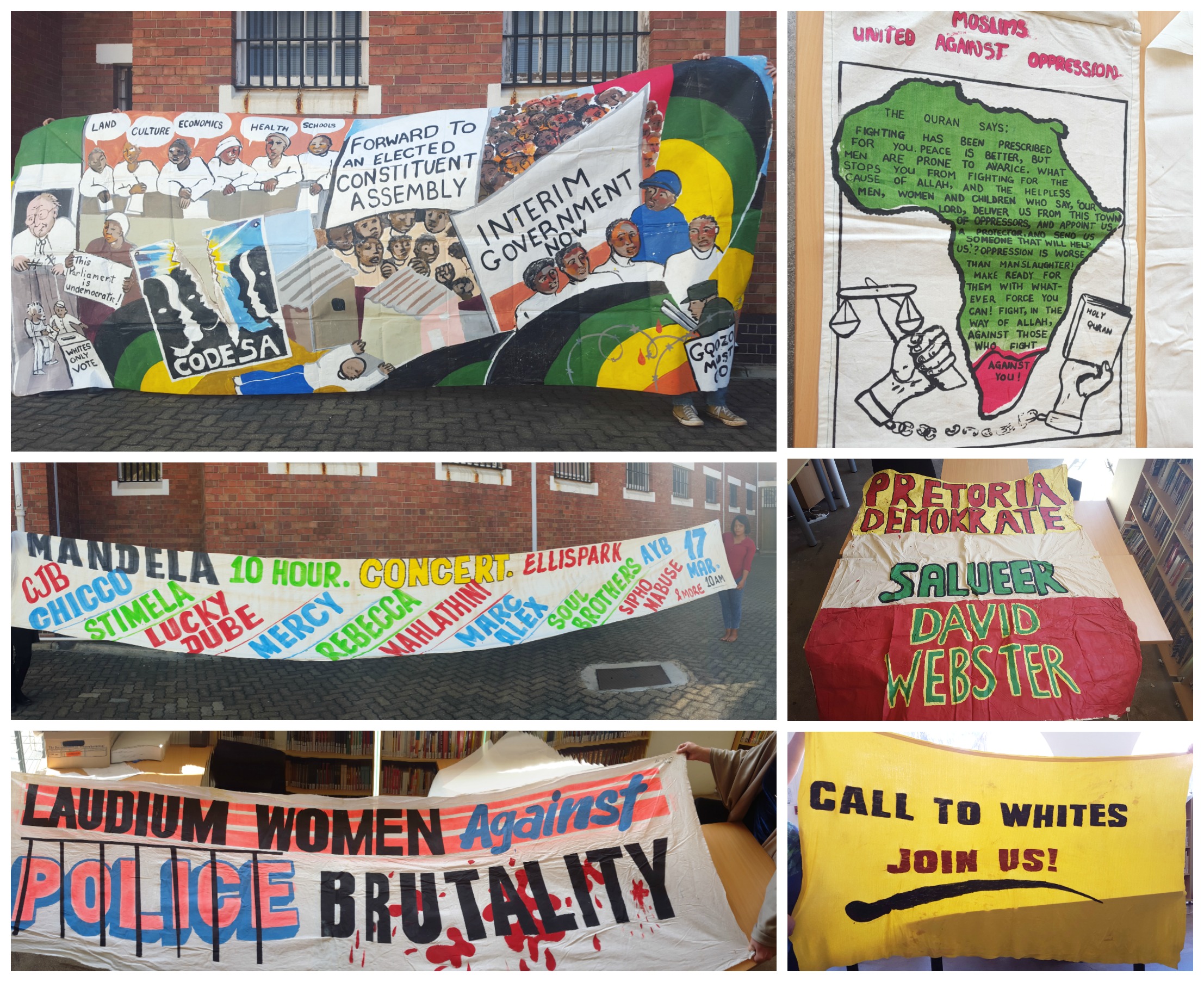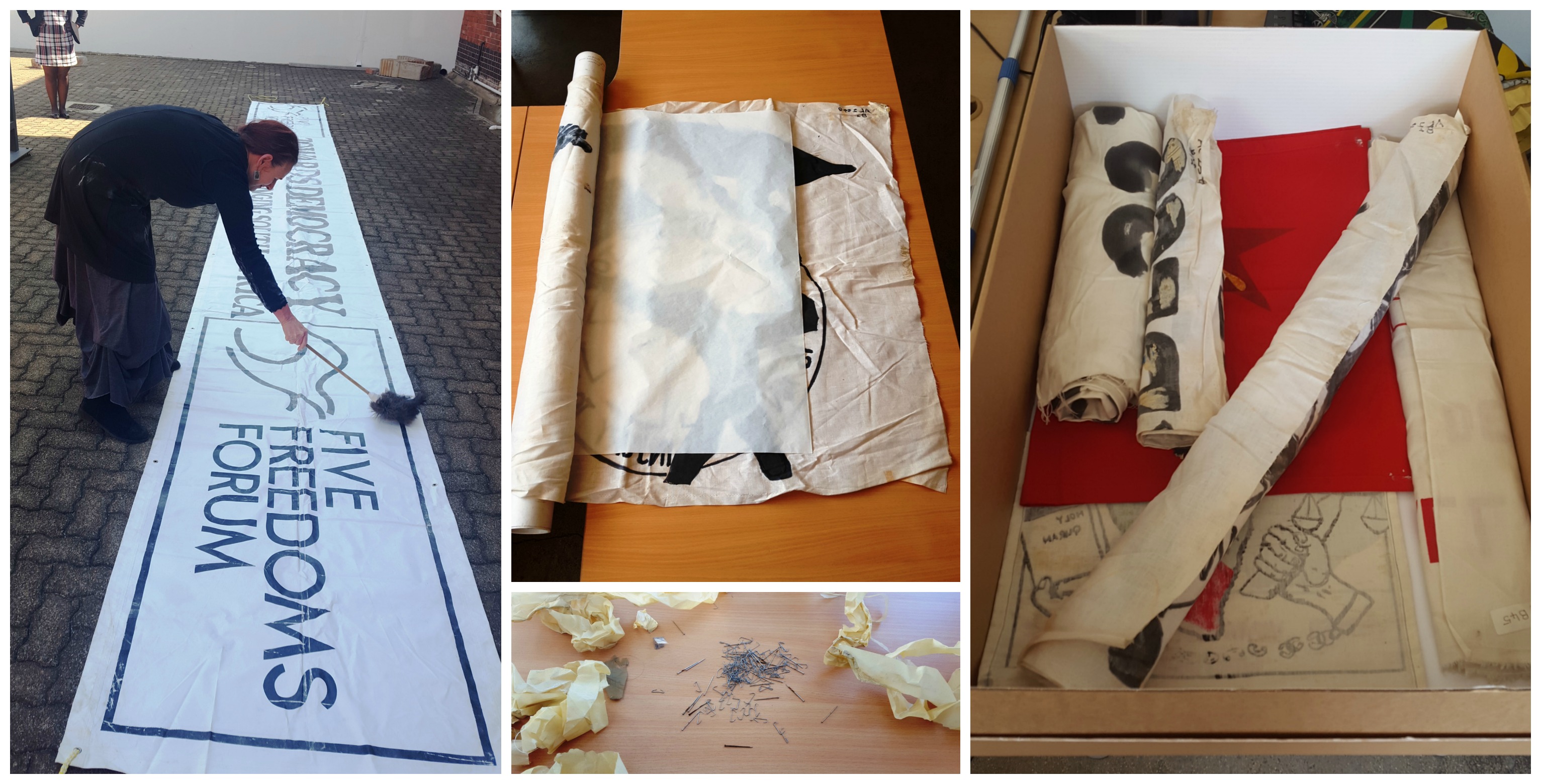
Before Facebook and Twitter banners became regular features of social justice campaigns, activists took to the streets with banners made of plastic, cloth and paper. SAHA's archive contains not only t-shirts, posters, letters and other documents, but also a fascinating collection of banners that speak to the history of protest in South Africa over the past 30 years. The banners make up an important part of the Ephemera collection (AL2540).
A part of the archival refurbishment, an ongoing project at SAHA, is checking and repacking the SAHA banner collection. The SAHA team was focused on implementing preservation techniques on the banners.
Firstly banners as most materials, with the exception of film and negatives, need to be a stored at a mild, stable temperature and relative humidity. A brand new humidifier was installed in the first half of the year and we are now able to maintain the appropriate humidity within the archive.
What do banners need to preserve their longevity, you may ask? Well, it is more complicated than just a one line answer. The first complication is that different banners are made of different material and paint/adhesive combinations. So they each have their own best method of storage. However, the most important rule is do not fold the banners. Folds put strain on the fibers and can result in warping or, worse, tearing.
The first step in preserving the banners was to sort them according to the material they are made of. The second step was unfolding, photographing, and applying preservation measures. These included the removal of staples, rusty pins, and several forms of tape. All metal fasteners, where possible, were removed as rust is an enemy to preservation. Similarly, the adhesives of tape discolour and as they disintegrate damage what they are attached to.
The final step was rolling the banners with acid free tissue paper in between the roles. This was challenging at times as some of the banners were very large. Ideally, the banners should be rolled around an acid free tube. However, we had to make do with using a poster tube as a rolling implement. The less flexible a banner the larger the role should be. If there is a large image or mural on one end of the banner, that end should be last to be rolled up as it then experiences the least amount of curvature.

The smaller banners have been stored in acid free archival boxes to limit the amount of light and air contact. This will also limit the amount of dust that gets onto the banners. The larger banners are stored on shelves with as little weight as possible on top of them to limit creases and paint cracking. Muslin has also been used in-between very large and heavy banners. The over-sized banners will be covered in muslin to protect them, similarly to the boxed ones.
The collection consists of approximately 50 banners produced in the 1980s by organisations such as the United Democratic Front (UDF), the Five Freedoms Forum (FFF), the Transvaal Indian Congress, Johannesburg Democratic Action Committee (JODAC), and the Durban Democratic Association, to name a few.
Some of the banners, together with a selection of struggle t-shirts from the SAHA Ephemera collection (AL2540), are now on display as part of the Images of Defiance Exhibition being held at Constitution Hill.
See inventory for the SAHA Ephemera collection (AL2540)
Read about SAHA's Images of Defiance exhibition at Constitution Hill






